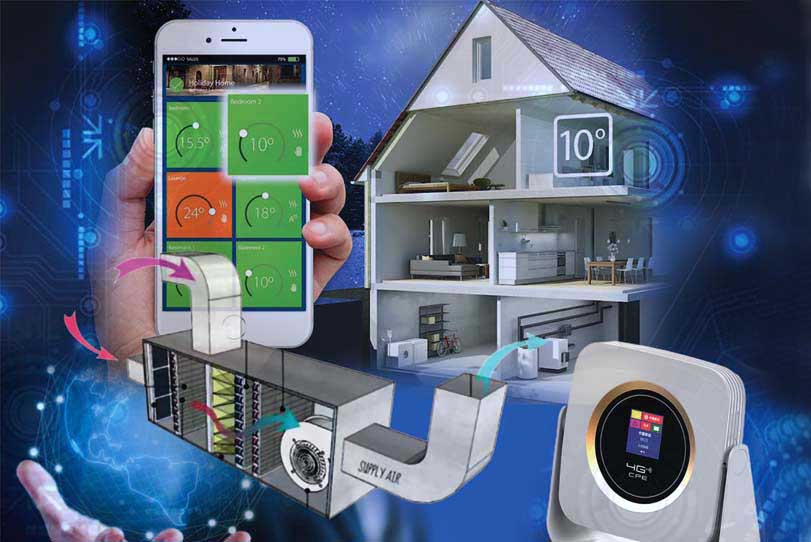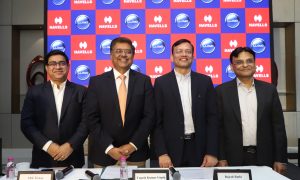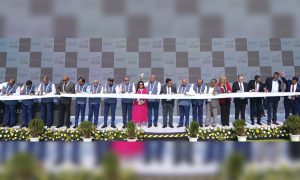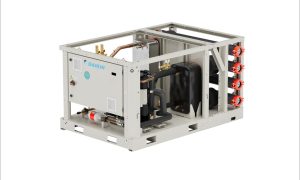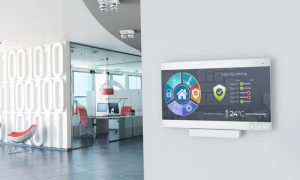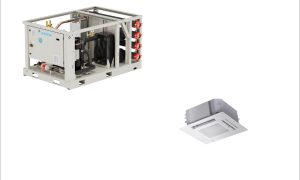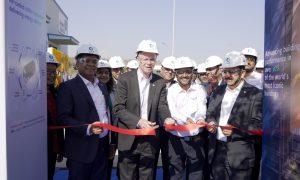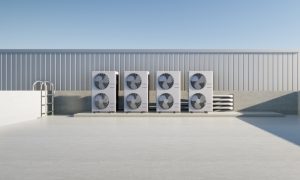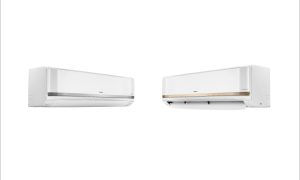Smart HVAC systems leverage networked HVAC components, IoT technology and sensors that integrate with building automation systems. In present times of digital revolution, awareness is an essence in addressing the gap for adoption of technology!
Pandemic devastating impact worldwide led to the technological advances and challenges in the HVAC industry creating smart HVACR systems; transporting and safely storing temperature-sensitive goods. The voice-controlled heat pumps, sensor activated devices, and mobile apps controlling HVAC units from anywhere have been becoming common across the HVAC industry. Smart HVAC systems ‘Learn’ where and how much heat or air to bring to each section of the building.
Smartness is when a device can perform actions and maintain temperature all on its own based on a certain set module. A smart HVAC system leverages networked HVAC components, IoT technology and sensors that integrate with building automation systems. The sensors collect data about conditions throughout the building and also monitor building occupancy, compiling data over time that will inform, track, and program HVAC systems. Potentially, energy saving, comfort and convenience are the advantages now. The future is all about inter-connected devices.
New trends and innovations for IoT relevant technologies
AI and IoT are part of our everyday life. It enables us to make informed decisions about everything from health, to building to air quality and security, to empower a smart infrastructure as we hear about digital connectivity apps in the new normal times. Now, that everything under the sun is coming in, discussing it, Ms. Sakhee Chandrayan, President INBAC Association, is of the opinion, “When it comes to integration of the building, and about the rooftop to the basement, it is solar to the PHEV. Now, there are certain sections which are predominantly there in India or countries like India, where solar power can be generated highly, because geographical regions have a lot of sun.”
PHEVs are going to work very well, and the trends have started. And, for powering the PHEVs with the solar electricity generated, time actually calls for innovation. The rest of the conditions are going through, and this needs to be adjusted when the transition is happening.
Further, as we are transitioning into new normal times, on cards are a lot of innovations starting from water purification, waste management, filter usage, and solar that should have been in India. These transitional changes have started towards innovation. Considering this view, Ms. Sakhee says, “For innovation in India, we have to innovate on an early basis as only finite time is left to market.” Now, for instance, if Uber decides to create their own maps, they are going to take enormous time to create maps and also provide the service in the cab, right? But if the maps from a collaborator are taken, say for example, Google Maps; they provide their service as an innovation, then they reach the market faster.
The innovation which suits in every aspect, would suit the entire globe. And so, standardised practice is to be taken and adopted from the world.
5G impact on ecosystem, especially for smart HVACR
Smart HVAC System improves comfort levels along with energy efficiency in commercial buildings, and 5G connectivity as announced in the budget will bring more changes in the IT ecosystem which will have fast processing time. The biggest contention is that our mindsets have to change in order to accept technology.
Deliberating the integration of 5G technology into HVACR systems, Mr. Arup Majumdar, Chief Executive Officer, Trariti Consulting Group feels, “Ability to consume and process data will become much faster. And that, in fact is towards adoption of new technologies which are a little bit far being not able to adopt because of the bandwidth, but it would definitely be good.”There are hard times convincing people that they should go for certain technology as far as total cost of ownership is concerned since, it has immense value. So, “The mindset change has to happen. People have to become aware that the technology is there and that it needs be used,”adds Mr. Arup.
IoT technology to prevent breakdown in communication
In an IoT ecosystem sensor, each element has its role and if a single component fails, the complete IoT chain will break leading to communication break. To deal with such safety breaches, some AI based support technologies need to come to rescue.
In any system, even a single point of failure has to be prevented. When we reached out to Dr. Vishal Garg, Professor, IIIT Hyderabad, for his opinion, he remarked, “IoT is one system which actually provides resilience against this, because each device can be connected to the internet directly. It is not necessary to have a common gateway from which everybody is communicating. And there can be various ways through which we all are connected to the internet.” “And, the beauty is that even if one link fails, there is a possibility of these sensors and devices forming a mesh and finding another way to communicate to the internet,”he elaborated.
However, to make the system even more robust, there is a possibility of two tiered decision making or control. So, one thing is ‘cloud’ and it is doing the decisions for all the sensors and all the actions, but if the cloud fails, then there should be a fail-safe technology; either localised computing is available; edge computing for computing whatever it is – in the worst case, the device itself in the end can have some computing and no work. So, actually, IoT kind of makes it even better and to understand, how the AI is helping there are two things: one is about low costs sensors, weird things and BMS and, good quality sensors, but less number of sensors, because there exists a lot of cost involved in wiring and we can put so many sensors, now with energy harvesting with wireless technologies, going for several low cost sensors, AI can help us in getting accuracy as well as spatial distribution. And, the second thing helping us is virtual sensors. So, while creating virtual sensors, there is no problem, it cannot fail in that sense, it can be a particular measure that can be sensed through other measurements as well as virtual means, since it can be created.
Therefore, a lot of developments are happening, and as mentioned the things make it robust enough against failure. However, a latency factor also comes into being, which in networking terms is the total round trip time it takes for a data packet to travel. Latency is related to bandwidth and connectivity with Cloud and it is bound to be there as Dr. Vishal says, “Latency will be there, so it is not a good idea to move everything to the cloud, for every small action if a button press is there, light has to switch on and then wait for that action to go to the cloud and come back. So, a proper approach is needed in which most of the actions can happen locally.” Cloud is more like a supervisory cloud. It is more for interaction and understanding, getting the bigger picture and not for mundane actions. A feeling that not everything, particularly data is going to the cloud can secure privacy too in this way.
Most of the data is within the building. Only that data where analytics is required to be done, is shared in an anonymous way, preventing the privacy as well as possibility of somebody hacking into the system. So, many things can be done, it is not a black and white solution that either everything has to be on cloud or everything has to be disconnected. It has to be a hybrid model.
The future is all about interconnected devices, comfort and convenience and optimising TCO. Increasing innovative integration of IoT in HVAC is the future. When we fathom innovation potentials for next Gen smart technologies in future, it is almost infinite. Taking the viewpoint of Mr. Subramaniam C, Principal Consultant, SSS Consultants notes, “Whatever, at every level, every device, every smart controller, and field devices, can be connected into IoT. And one can build the intelligence into that, be innovative, and start manufacturing locally. Also, there are a lot of opportunities for every creative person to start working on that. And it is all up to them how they want to build that intelligence into that small piece of equipment.”
It does not mean that you have to follow somebody’s programming pattern or their routines or their languages and things like that, one can be as innovative as well. The sky’s the limit for anyone with the right kind of development and innovation skills, to take the entire industry at every level to IoT platform, and provide a solution, install installation or take it there and see that it is also operating. That is one, implementing a system, but making it operative during the entire 15 years, 10 years, means talking about the lifecycle of that. On such development Mr. Subramaniam says, that is where the returns are going to come back to the owner, that is where the investment is being reflected back. That is where; they should get into the engagement of providing continued service to the building owner, taking the responsibility, and ensuring that return on investment comes to the owner. For that there is an impending need for upskilling people directly involved in implementing the IoT system of things.
Increasing awareness to educate people for skilling
Though there is a time lag between conventional and data driven revolution, Ms. Sakhee says, when it comes to increased awareness, repeated ROI and NOI is there, but going beyond return on investment is net operating income. Now, when a building is able to provide the net operating income, in form of say, energy efficiency or cyber security or any aspect of the building, which are regenerated, then the innovations are going to be integrated quickly. So, to create awareness, we have ROI to NOI which needs to be taken into account.
Mr. Arup adds to raise this awareness level. One of the things seen in other countries is there’s a close interaction between academia and industry. Today, if you enquire in any engineering college, what is being taught in HVAC; that is only the old standard? Whatever learnt 20 years back, needs updating the curriculum to make it more industry relevant, but there is still a gap. So, there has to be some effort to create a bridge between these two. So the young chaps will come out into the field more educated from an ITI or from an engineering college.
When we think about awareness and the frontiers of knowledge in real life in the industry, air quality assumes proportionate role in the present pandemic scenario. According to Mr. Arup, in the current situation, the focus on health and safety is paramount. In this market, for example, talking about the air that we breathe, we know that especially in the northern part of the country, we have PM 2.5 issues. “We have particulate matter issues. We have people now, as we had Covid issues earlier. Handling air quality or the quality of air that we breathe in is to be included as a part of the smart HVACR system.” That is something which people will adopt really easily. And, it is becoming necessary to absorb technology.
Absorption of technology from international market
District cooling is the hot issue in HVACR industry. HVAC industry is not a storage service provider. So, now not just look for chemical storage, also look at big possibility of thermal storage. HVAC people can play a big role here. So storage is not an electrical people job. Look into that matter and reduce the demand. According to Dr. Vishal in smart grids, there is a lot about storage, especially because of renewables. The district cooling can play a big role, especially in residences, where right now everybody’s going for individual ACs and peak load increases when all the ACs are on. Here, district cooling based thermal storage, can really help in shifting the load as well as reducing it. So these two things should be looked into technologically. It’s just a matter of rethinking how to design and incorporate these.
When it comes to new strategies the only strategy is sustainability that needs be discussed time and again, feels Ms. Sakhee. Now, building automation in India is adult. It has been 20 years here. And now it has to run on its own. The responsibility is the theme that has to run. So, generating energy from natural sources and reusing it implies actually talking about systems. Ms. Sakhee strongly feels, “Collaboration is very important to decide what to innovate and what not to reinvent and keep the global relevance which not only brings the right technology at the right time to market in India, but it also opens the global market for the production of India.” So collaborations are very important.
Blockchain technology from the point of view of HVAC technology today is available says, Mr. Arup. All the major multilateral players have a position in India, the hurdle being faced is, the mindset of the people. Many people are the technology providers that do this. But do they have the consent of the building owner or the developer! Who are the people to absorb the technology, it is unlikely that availability of technology modifies.
On absorption of technology, Mr. Subramaniam shares not to be limited by geographical limits but to think about only products manufactured in India or systems manufactured by India. There are not any great BMS manufacturers or smart ones, complete 100 percent solution providers who started from A to Z are available in India. But today, there are no boundaries. Use any good product technology level, and start manufacturing something for development sake, to make the global market and then access it. Technologically, it is better to look at it from the end user point of view and bring the cost for the owner at a very affordable level without thermal control. Thermal comfort is the key word. Everything is thermal comfort driven, be it HVAC driven or chillers driven, or VRF driven. It is driven from thermal comfort. So the mixed mode system is better. One does not need air conditioning 16 hours a day. Work for these concepts for possibly getting implemented. And so, with a developer mindset, accepting a mix mode system is not easy. Whereas occupied and owned buildings will go on possibly for mixed mode systems technology but, there is a need to look at awareness from sustainability point of view.
If we consider Dr. Vishal’s viewpoint, people are witnessing a huge change every year, witnessing renewable energy getting into the grid distribution generation; witnessing EV getting into our sphere. India is witnessing a huge construction, adding a lot of space, and witnessing IoT. So, all these things are happening right now. And there is an opportunity for India to leapfrog. Not only about adopting the new technologies, but to develop the new technologies and be the world leader and there lies a huge market potential.
If the standardisation and interoperability is followed, not only developing products and processes for consumption, but it is possible to export them and there is a possibility here to lead in this technology spectrum. Country has a huge cooling demand, a huge air conditioning demand, so first solve problems and then export those solutions. A concentrated effort is required and there is an impending need to have some kind of smart air conditioning Research Centre, which is interdisciplinary in nature, where not only the technology part, but also the human part should be considered.
A very important aspect of any smart HVACR system technology integration is the acceptance and how human behaviour interacts with. How to use it, which includes comfort, which includes many other things too! Hence, bringing in the sustainability, bringing in the cost, bringing in the human aspect, bringing technology all together, is the plausible approach to look at this holistically and put the best brains to solve this problem.
Cookie Consent
We use cookies to personalize your experience. By continuing to visit this website you agree to our Terms & Conditions, Privacy Policy and Cookie Policy.

